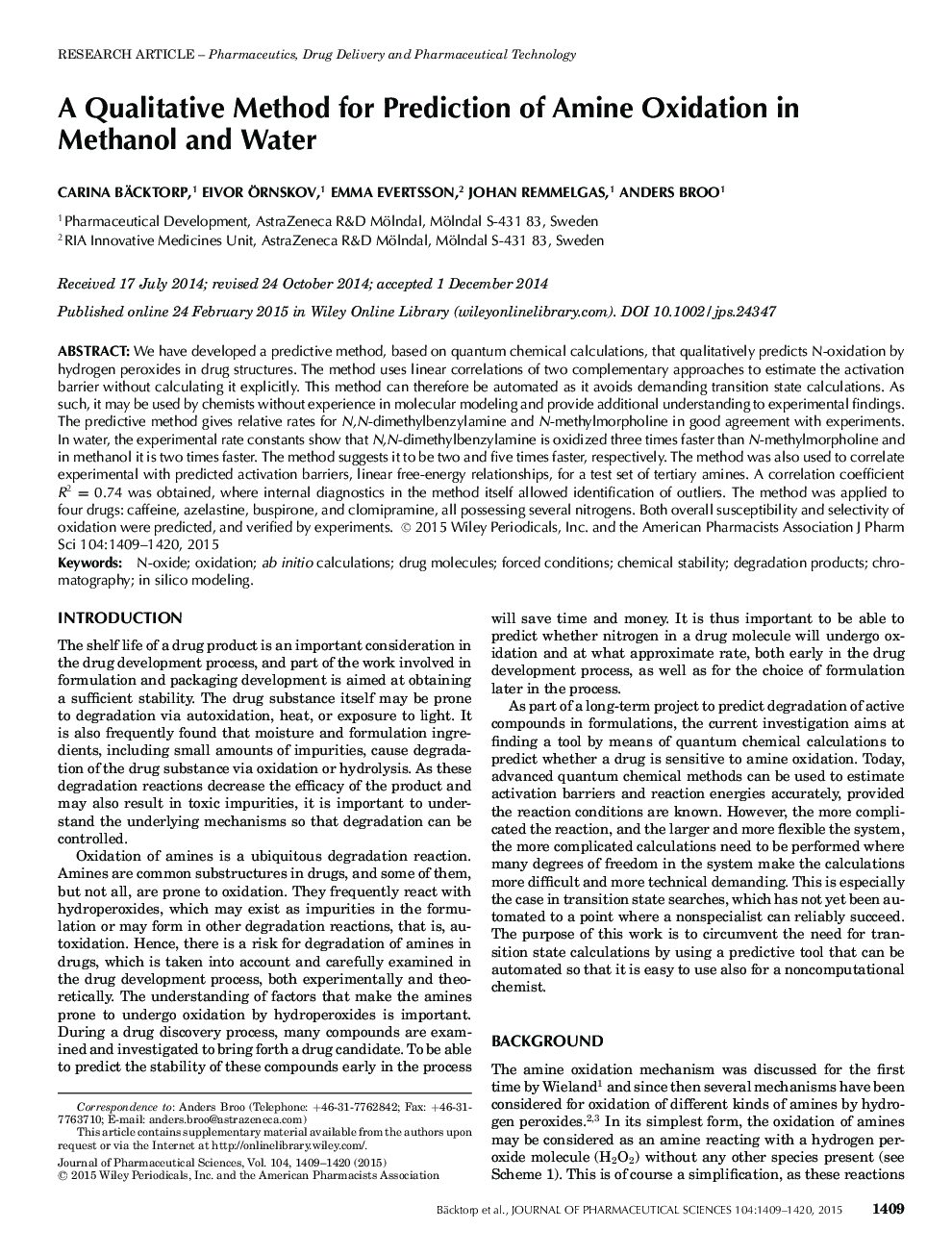| Article ID | Journal | Published Year | Pages | File Type |
|---|---|---|---|---|
| 10162132 | Journal of Pharmaceutical Sciences | 2015 | 12 Pages |
Abstract
We have developed a predictive method, based on quantum chemical calculations, that qualitatively predicts N-oxidation by hydrogen peroxides in drug structures. The method uses linear correlations of two complementary approaches to estimate the activation barrier without calculating it explicitly. This method can therefore be automated as it avoids demanding transition state calculations. As such, it may be used by chemists without experience in molecular modeling and provide additional understanding to experimental findings. The predictive method gives relative rates for N,N-dimethylbenzylamine and N-methylmorpholine in good agreement with experiments. In water, the experimental rate constants show that N,N-dimethylbenzylamine is oxidized three times faster than N-methylmorpholine and in methanol it is two times faster. The method suggests it to be two and five times faster, respectively. The method was also used to correlate experimental with predicted activation barriers, linear free-energy relationships, for a test set of tertiary amines. A correlation coefficient R2Â =Â 0.74 was obtained, where internal diagnostics in the method itself allowed identification of outliers. The method was applied to four drugs: caffeine, azelastine, buspirone, and clomipramine, all possessing several nitrogens. Both overall susceptibility and selectivity of oxidation were predicted, and verified by experiments.
Keywords
Related Topics
Health Sciences
Pharmacology, Toxicology and Pharmaceutical Science
Drug Discovery
Authors
Carina Bäcktorp, Eivor Ãrnskov, Emma Evertsson, Johan Remmelgas, Anders Broo,
